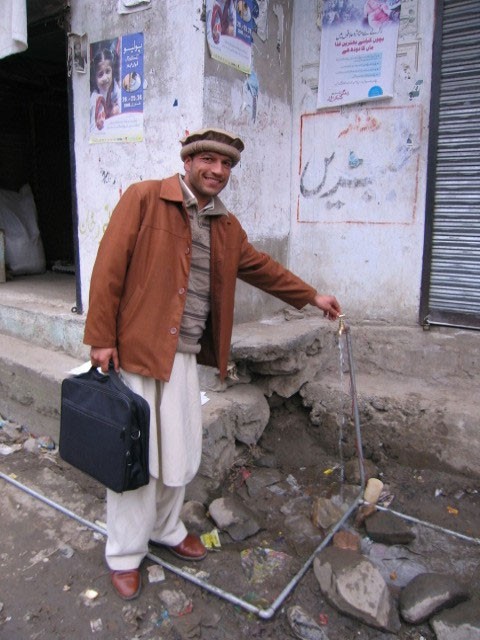
Challenge
The earthquake that hit Pakistan in October 2005 shifted the flow of freshwater springs and broke pipes that transported clean water from mountain springs through gravity-fed pipe systems. In some cases, the earthquake damaged reservoirs and spring protection chambers. In the Jambori and Hillcot Villages in the Siran Valley, the population began relying on river water for drinking, cooking, and bathing, causing people to contract illnesses from drinking contaminated water.
Initiative
USAID provided funding and technical assistance to reestablish water and sanitation systems, as well as test and monitor those systems to ensure water quality is compliant with global health standards. USAID funded cash-for-work labor to clear debris from the previously existing water supply system and install structural elements for a new one. Managed by engineers who designed the system, workers cleared the mudslides that obscured spring sources and repaired storage reservoirs. To promote cleanliness and further reduce waterborne illness in existing water sources, USAID also set up latrines using cash-for-work programs.
Results
New, galvanized iron pipe water systems now deliver fresh spring water to 4,000 people living in tented settlements in Jambori and Hillcot. Doctors at basic health units in the Siran Valley commented that before the water systems were installed, almost 60 percent of the incoming patients complained of intestinal diseases linked to unsafe drinking water. After the spring water became available, fewer than 8 percent of patients in Jambori complained of gastrointestinal disorders. USAID is steadily making progress reclaiming lost springs buried under mudslides and earthquake damage. Efforts are underway in eight other Siran and Konch Valley villages to bring clean water to 20,000 more people whose homes collapsed in the disaster.







Comment
Make a general inquiry or suggest an improvement.